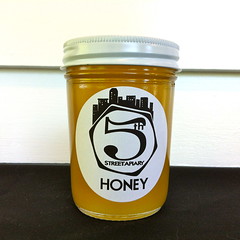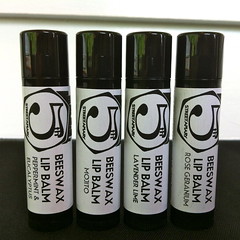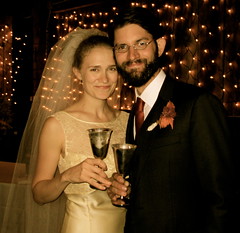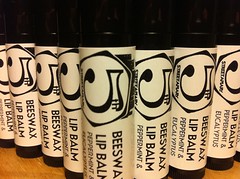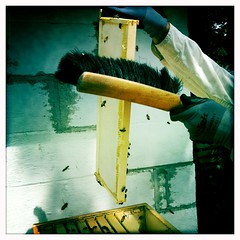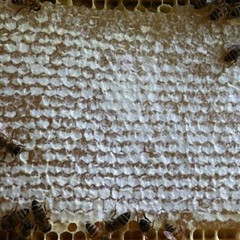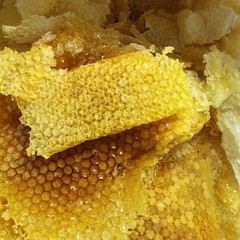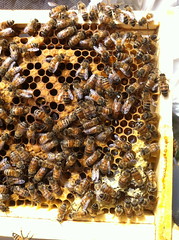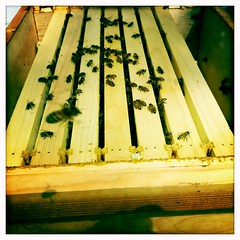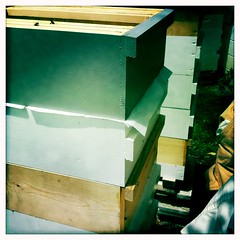The News
We just provided the honey for West Sixth Brewery's soon-to-be-released 5th Street Honeybee Rye! You may not know this, but we love beer, especially the beer brewed by West Sixth. We also love our city and the great collaborations it fosters. Not least, we love local food and supply chains. So, to have the three come together in this brew just makes us pretty lovesick. At the very least, you could say that we're excited. The beer will debut at the Fest of Ales on August 31st.
The Backstory
So here's a bit of how we came to have enough honey to contribute to a batch of beer.
First off, we've found it slightly bewildering to begin beekeeping--a hobby that teaches you to pay more attention to the seasons and environment--during a period of record-breaking and unseasonable rain, heat, and lack thereof. We've been trying to be more attune to patterns just as those patterns seem to be unraveling. That has certainly been the case this year.
 |
| tall hives = awesome spring |
This year, with almost every flower and tree we kept track of in the neighborhood blooming a full month earlier than last year, our spring honey harvest also came a month early. However, when we harvested our bulging honey supers during our May harvest we found quite a bit of almost-honey in the hive that wasn't quite ready to take.
 |
| fully capped spring honey |
Two things happened between the gang-busters spring harvest and the summer harvest: 1) a drought which lead to a dearth of nectar which lead to the bees consuming any new nectar brought back to the hive, 2) the opportunity to cap all that almost-honey we'd left in the first round. What did this mean for the summer harvest?
Spring harvest part deux!
I suppose this makes sense. We enjoy seeing the seasons expressed in the honey and February through August 2012 did feel like two springs and a dearth. But it is still a strange thing--and disconcerting--to experience two spring crops and no summer in your third season as a beekeeper.
But hey, spring honey is the most popular kind. So enjoy!
The Epilogue
So, now that we have all this honey, how do we get it out to folks? Well, we're playing around with some new venues that we should talk about.
 |
| Now at Stella's |
2) We've also started selling at my brother's deli: Stella's Kentucky Deli. Our honey is already there and our lip balms will be soon.
3) As always, you can order directly through us by emailing 5thstapiary@gmail.com and we can arrange the details.
4) And finally, if you are a local restaurant or the like, and would like to use our honey as an ingredient in your confections, we can do that too (see The News section at the beginning of this post :). If you're interested, again, email us at 5thstapiary@gmail.com.
|
|
|
|

